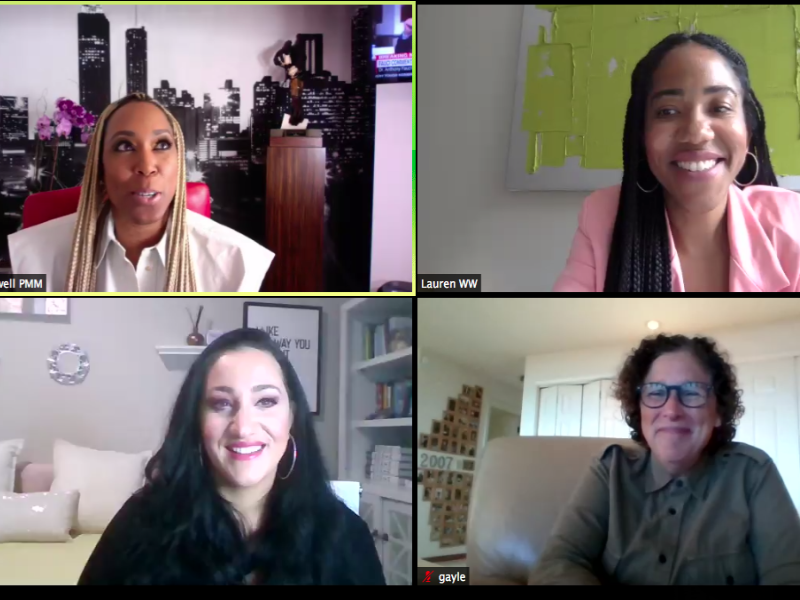Diana Marszalek 07 Jul 2020 // 1:12PM GMT

NEW YORK — As Covid, civil unrest and uncertainty persist, brands are pivoting communications to focus more on forming bonds with consumers than selling their wares, industry experts said.
“We are not as much talking about product, service, and sales as we are about talking about the company and its connection to community,” PMM Agency founder and CEO Kimberly Blackwell said, adding that brands’ communications during this time is key to their viability. “The world is changing. The world is watching."
Blackwell’s comments were part of a discussion with two fellow marketers — Eli Lilly USA chief media officer Lina Shields and iHeart Media CMO Gayle Troberman — about how brands are overcoming the current challenges of reaching consumers at ColorComm’s first virtual summit held last week. The organization's founder Lauren Wesley Wilson moderated.
The difficulty in doing that varies depending on brands’ dealings with consumers before the Covid-19 pandemic and more recent push for racial equity, Blackwell said. “It was a radical shift in some areas, seamless adjustment in others,” she said.
As a pharmaceutical company, Eli Lilly was among the companies that made dramatic changes in its communications in the early days of the Covid-19, which included stepping back its messaging — including urging people with non-critical conditions to see their doctors — due to the impact the pandemic had on the medical community.
“For us overnight it was realizing the ecosystem in which the healthcare systems operates wasn’t working,” Shields said. Lilly suspending advertising medications that didn’t treat life-threatening diseases, focusing instead on making sure consumers had access to the correct Covid information — and that the company could continue manufacturing critical products, like insulin, during the shutdown.
Lilly was also cautious in its communications around the Black Lives Matter protests, opting to defer to the individuals involved in the issue. “Our biggest job is sometimes to shut up and give the mic and platform to people who have something to say in this moment. And that’s not pharma,” Shields said.
Using real-time data in making such decisions is particularly critical. “Our listening has to change because people are speaking up, people are making choices. People are also experiencing emotions that they are able to express publicly that they weren’t before,” Shields said.
“Your listening should really be on steroids right now,” she said.
Troberman said iHeart is also relying heavily on consumer input in tailoring its programming to reflect this particular moment in time. The company, she said, conducts daily sentiment surveys “trying to understand what people want” so radio stations can adapt accordingly. Last week, iHeart launched the Black Information Network, an audio news service for the Black community, in 15 markets around the country.
Troberman also emphasized the importance of brands making themselves part of the conversation, and community, through partnerships and communications that create connections with consumers, many of whom are living more isolated lives. “If we partner we will do a better job,” she said.
Blackwell said it is critical that companies keep a close watch on consumer sentiment and “meeting people where they are.”
“Understand tone and delivery,” she said.
Blackwell encouraged communicators to take the lead in pushing for diversity, which furthers racial equity and affirms the critical role communicators play in improving business. “My job is to bring the counsel not for what they want to hear, but what they need to hear. And that is how you will create value,” she said.
“The time is now to seize the moment to bring business solutions is now. Think big, think bold.”


































.jpg)


















